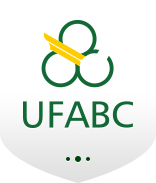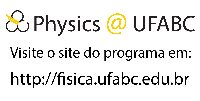Banca de QUALIFICAÇÃO: MATHEUS PEREIRA COELHO
Uma banca de QUALIFICAÇÃO de DOUTORADO foi cadastrada pelo programa.STUDENT : MATHEUS PEREIRA COELHO
DATE: 04/08/2025
TIME: 16:00
LOCAL: Sala 302A do Bloco B do Campus de Santo André da Universidade Federal do ABC
TITLE:
EFT Approaches at the CMS Experiment
PAGES: 50
BIG AREA: Ciências Exatas e da Terra
AREA: Física
SUBÁREA: Física das Partículas Elementares e Campos
SPECIALTY: Propriedades de Partículas Específicas e Ressonâncias
SUMMARY:
Despite being well motivated, the search for Beyond Standard Model (BSM) physics is challenging due to the absence of hints about the properties of a possible new dark sector of particles. In the context of LHC searches, different hypotheses have been probed over the past years, such as WIMP dark matter, supersymmetry, and warped extra dimension models, but all data collected so far have been found to be in agreement with the Standard Model (SM). As an attempt to extract model-independent constraints, this work focuses on ongoing Effective Field Theory (EFT) approaches in the context of LHC searches, in particular for the CMS experiment.
The discussion is divided into two parts. In the first part, we focus in the Higgs boson pair production (HH) in the multileptonic channel, and the application of the EFT description for modeling the non-resonant signal distributions by means of the so-called reweighting technique. This method allows us to reweight the SM sample to any point in the five-dimensional space spanned by the Wilson coefficients associated with the effective descriptions used here, the SM EFT and the Higgs EFT (SMEFT and HEFT). We show that by using this EFT technique, one can achieve a reliable description of this parameter space without the need for dedicated Monte Carlo generators. As a result, we can efficiently cover a wide spectrum of signal scenarios in the experimental analysis. In the second part, by analogy with photon fluxes produced by proton beams as described by Weizsäcker–Williams-type approximations, we use EFT tools to study the presence of fluxes of axion-like particles (ALPs) within the LHC. As a consequence, just as photon–photon collisions can be studied, we show that ALP–photon and ALP–ALP collisions can also be explored in ultraperipheral collisions.
COMMITTEE MEMBERS:
Presidente - Interno ao Programa - 1544422 - EDUARDO DE MORAES GREGORES
Membro Titular - Examinador(a) Interno ao Programa - 2211564 - ANDRE PANIAGO LESSA
Membro Titular - Examinador(a) Interno ao Programa - 3065679 - BRENO MARQUES GONCALVES TEIXEIRA
Membro Suplente - Examinador(a) Interno ao Programa - 3057567 - CHEE SHENG FONG




